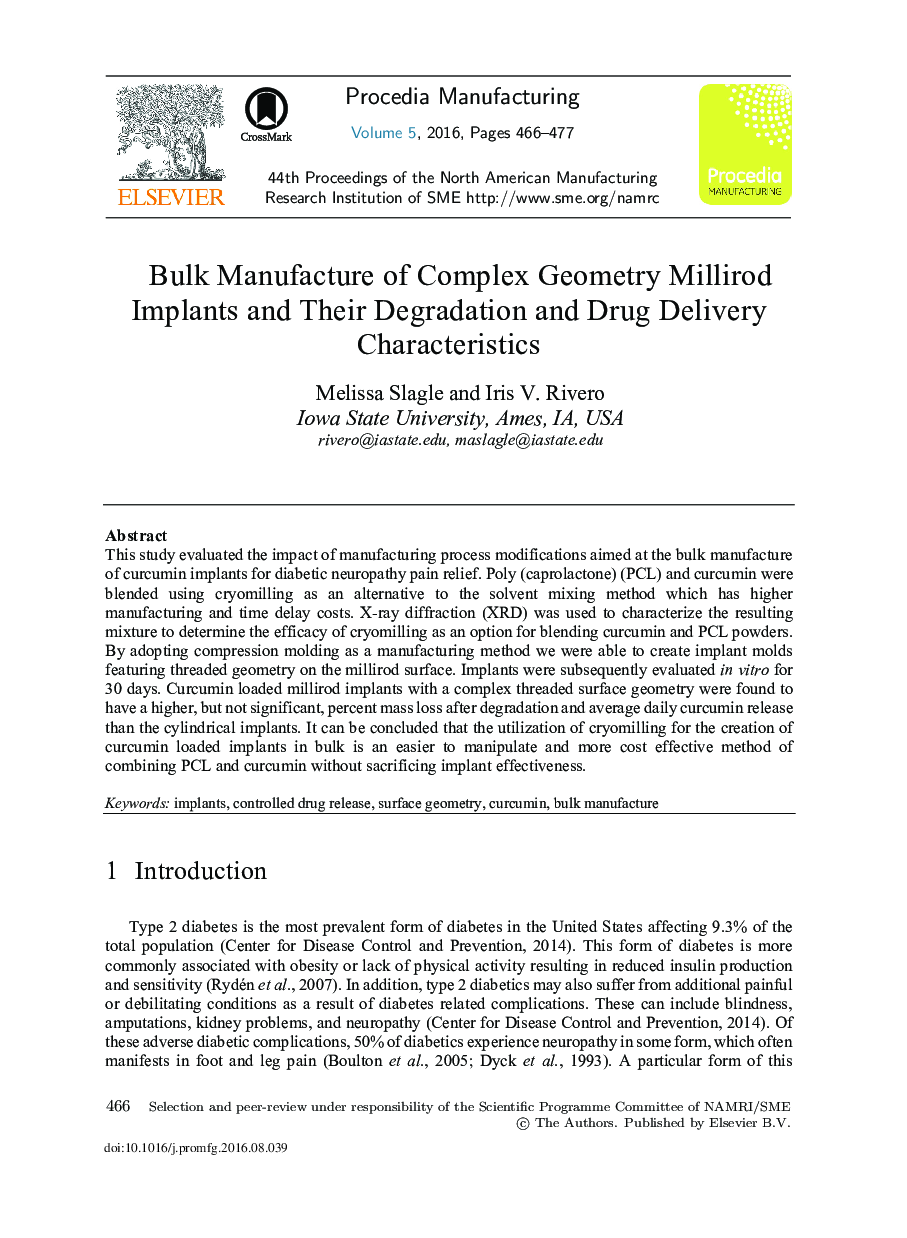| Article ID | Journal | Published Year | Pages | File Type |
|---|---|---|---|---|
| 5129039 | Procedia Manufacturing | 2016 | 12 Pages |
This study evaluated the impact of manufacturing process modifications aimed at the bulk manufacture of curcumin implants for diabetic neuropathy pain relief. Poly (caprolactone) (PCL) and curcumin were blended using cryomilling as an alternative to the solvent mixing method which has higher manufacturing and time delay costs. X-ray diffraction (XRD) was used to characterize the resulting mixture to determine the efficacy of cryomilling as an option for blending curcumin and PCL powders. By adopting compression molding as a manufacturing method we were able to create implant molds featuring threaded geometry on the millirod surface. Implants were subsequently evaluated in vitro for 30 days. Curcumin loaded millirod implants with a complex threaded surface geometry were found to have a higher, but not significant, percent mass loss after degradation and average daily curcumin release than the cylindrical implants. It can be concluded that the utilization of cryomilling for the creation of curcumin loaded implants in bulk is an easier to manipulate and more cost effective method of combining PCL and curcumin without sacrificing implant effectiveness.
